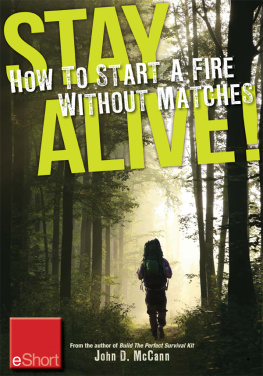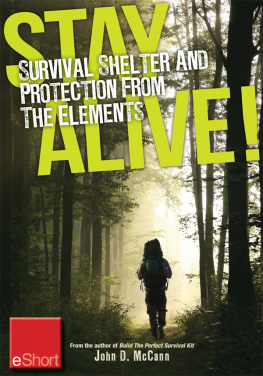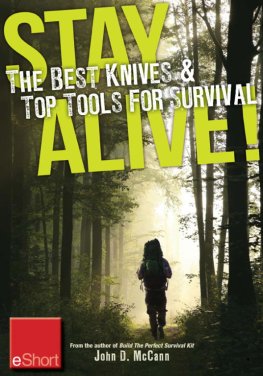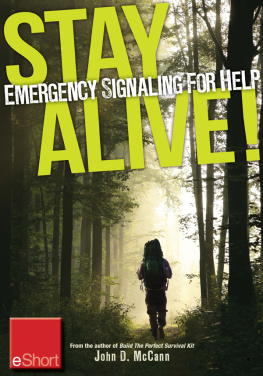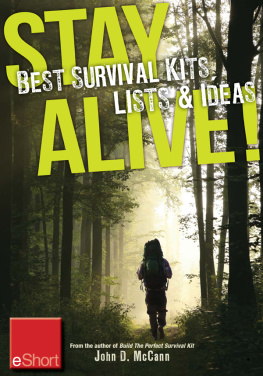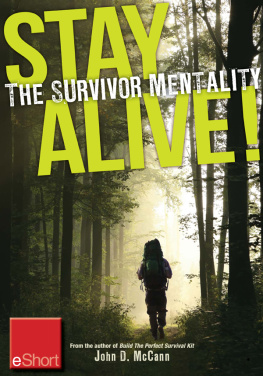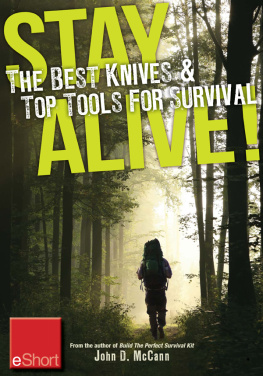Stay Alive: Water Collection and Purification
Know where to find sources of water and how to make it safe to drink.
By John D. McCann
You will learn in any good survival course that the human body needs water to function normally and to survive. Without water, dehydration sets in and your chances of survival diminish quickly.
Your body by weight is 75% water. This water helps to maintain your body temperature. Water lost through sweat, evaporation and other bodily functions must be replaced. An average individual needs two to three quarts of water each day when performing normal activity. If performing strenuous activity, such as during a survival situation, or in an excessively hot or cold climate, the amount of water required may increase to four to six quarts.
The Rules of Three indicate that you can go three minutes without air, three hours without shelter (from heat or cold), three days without water and three weeks without food. Although this is a generalized rule, it shows that you can go a lot longer without food than water. It also depends on the environment. In an extremely hot environment, your ability to function will diminish quickly if you dont remain hydrated.
Your urine is often a good indicator of dehydration. The darker the color of your urine, the more your body is dehydrated and the more water you need to drink. Dehydration can cause weakness, dizziness and decreased mental capacity and coordination, something a survivor doesnt need.
I am often asked if water cannot be purified for drinking, should they go without drinking. My feeling is that you should always try to purify water when possible. However, the bottom line is, if you dont drink you will certainly die. If you drink unpurified water, you have a chance of getting sick, being infested with parasites, etc., but you will live and be able to talk about how terrible it was while the doctors are pumping you full of medicine. Again, I dont recommend drinking unknown water as a general rule, but it beats the alternative.
Various water containers are substantial and can survive heavy field use. From left to right: a 32-ounce and 48-ounce BPA free Nalgene Bottle, the Guyot 32-ounce stainless steel bottle, the Nalgene Oasis and an old stainless steel military canteen.
Water containers
The best way to ensure that you have water when you need it is to carry it with you. Therefore, before discussing how to locate or purify water, lets discuss containers for carrying water. These containers can be used to carry water with you, and provide you with something to collect water in when you find it.
I prefer to carry a primary water container that allows me to carry a cook pot over it. This eliminates the additional space required for a pot. If you need to boil water or melt snow, you are going to need a pot of some sort.
The new Nalgene bottles, which are BPA free, are heavy duty bottles with wide mouths. I prefer wide mouths, especially when you are trying to fill them from a source of water in the field.
My preferred bottle is the 32-ounce Guyot stainless steel single wall bottle. You can boil water right in this bottle very handy in a survival situation. It also lets you melt water that freezes in it in a cold climate. Or, place hot water in it, put it in a sock and use it as a foot warmer in a sleeping bag.
The military style canteen does not have a wide mouth but fits inside the old style military canteen cup, which is one of my favorites for boiling water or cooking, and being metal (stainless steel) provides the options listed for the Guyot bottle.
Various water containers are substantial and can survive heavy field use. From left to right: a 32-ounce and 48-ounce BPA free Nalgene Bottle, the Guyot 32-ounce stainless steel bottle, the Nalgene Oasis and an old stainless steel military canteen.
Before moving on to other containers, I would like to explain how to make a bail for the Guyot stainless steel bottle. As you saw in the chapter on fire and light, I like to hang my bottle from a bail, like all my cook pots. However, if you drill holes into the side of the mouth of the bottle, it ruins the watertight seal when the lid is screwed on. I drill holes into the lower rim of the bottle, one on each side. There are then two ways to attach a bail.
The first way is to attach a small split ring into each hole drilled on the lower rim. Then make a bail with bends that pass through the split rings and lift the bottle. With this method the bail will not stand in an upright position unless you hold it. I use a lid from a Nalgene bottle on my Guyot bottles as they are smaller around than the Guyot lids. Just my preference, but the lid still goes on the bottle, even with the split rings installed.
The bail slides through the holes drilled in the lower rim of the Guyot bottle. The bends in the piano wire hold the bail upright.
I still wanted a bail that would stand up on the Guyot bottle, and after bending some 3/32-inch piano wire in various configurations I finally got what I was looking for. The new bail uses only the two holes drilled in the lower lip, and the split rings are not required. The bail is slid under the lower lip (the one with the bail holes) and the two short upright ends are inserted up into the holes on the lip. As you start to lift the bail, it slides up through the holes until it is caught by the U shape of the bail. Once the bail is upright, the side pressure of the bail locks it in an upright position. The bail can be carried in the container with your bottle.
Soft canteens made from clear flexible plastic laminate can be folded or rolled up when not in use.
For secondary water containers, I prefer a flexible container that packs down small. They supplement your primary container and provide additional storage for water. These containers, manufactured by various companies such as Nalgene and Platypus, are made from a clear flexible plastic laminate and can be folded or rolled up when not in use. They come in various sizes, even one that is designed to fit in the leg pocket of BDU (Battle Dress Utilities) trousers. They can be carried rolled or folded in a kit for use when needed, or carried filled and then rolled or folded for storage after use. They have leak proof caps, and some have gusseted bottoms so they will stand up when filled. These flexible canteens are available with small mouth and large mouth openings. This is often a trade-off, as the small mouth packs better, but the wide mouth is easier to fill.
One of the best flexible water containers is the Aqua-Pouch, which I designed specifically for survival kits, is available only from Survival Resources. The one liter Aqua-Pouch is a free standing, zip-closure, water storage container designed for use with water purification tablets. The pouch has a line marked for one liter of water for easy measuring when using water purification tablets.


